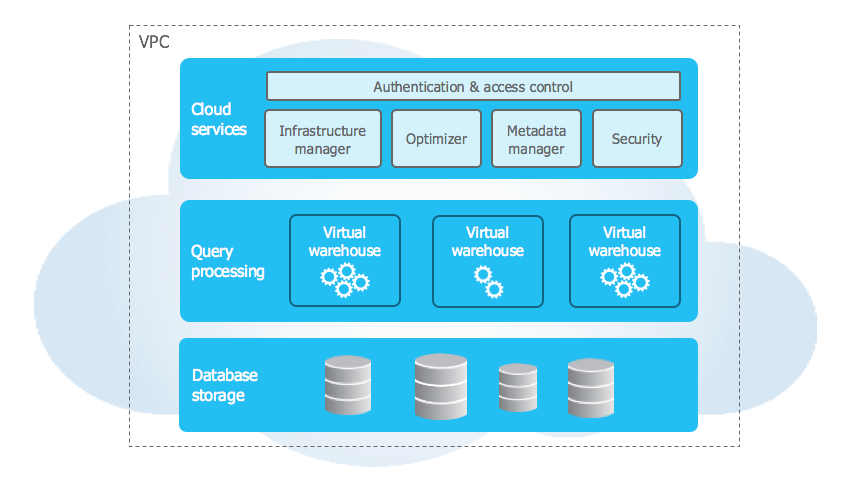Snowflake

Snowflake, a revolutionary cloud data warehouse that has gained immense popularity for its unique architecture and powerful features.
Snowflake, a revolutionary cloud data warehouse that has gained immense popularity for its unique architecture and powerful features.
In this article, we'll delve into the principle features of Snowflake Cloud Data Warehouse and understand how it is shaping the landscape of modern analytics.
- Cloud-Native Architecture: Unlike traditional on-premises data warehouses, Snowflake operates entirely in the cloud. It's designed to effortlessly scale up or down according to your data needs, eliminating the hassles of hardware provisioning and maintenance. This elasticity ensures businesses pay only for the resources they use, making it a cost-effective solution.
- Separation of Compute and Storage: Snowflake's architecture is based on a separation of compute and storage, a paradigm that enhances both performance and scalability. Data is stored in a centralized location, while virtual warehouses (compute clusters) can be provisioned on-demand to analyze the data. This decoupling enables independent scaling of compute resources, optimizing performance during peak workloads.
- Multi-Cluster Shared Data Architecture (MPP): Snowflake employs a Multi-Cluster Shared Data Architecture, enabling the simultaneous execution of multiple queries across different virtual warehouses without performance degradation. This innovation ensures that complex analytical workloads can be executed without impacting other processes, maintaining consistent performance and response times.
- Data Sharing: Collaboration is simplified with Snowflake's data sharing capabilities. Organizations can securely share subsets of their data with external partners, customers, or other departments, all while maintaining granular control over access and permissions. This facilitates real-time insights and decision-making based on up-to-date information.
- Near-Zero Maintenance: Snowflake automates much of the traditional maintenance overhead, such as indexing, partitioning, and tuning. This allows data engineers and analysts to focus on extracting insights from the data rather than managing infrastructure.
- Support for Semi-Structured Data: Modern data isn't just structured; it comes in various formats like JSON, Avro, and Parquet. Snowflake's support for semi-structured data simplifies the process of storing, querying, and analyzing these diverse data types, enabling a more comprehensive view of your business information.
- Advanced Security and Compliance: offers features like data encryption, access controls, and auditing. It is compliant with industry standards such as GDPR, HIPAA, and SOC 2, ensuring your data remains protected and compliant.
- Ecosystem Integration: Snowflake seamlessly integrates with popular analytics and business intelligence tools, including Tableau, Power BI, and Python libraries. This integration empowers analysts and data scientists to work with familiar tools while leveraging the capabilities of Snowflake's high-performance backend.

Snowflake Cloud Data Warehouse has emerged as a game-changer in the world of modern analytics. Its cloud-native architecture, separation of compute and storage, MPP design, and data sharing capabilities empower organizations to efficiently manage and analyze vast datasets. With near-zero maintenance and advanced security features, Snowflake paves the way for data-driven insights that drive innovation, collaboration, and informed decision-making. As businesses continue to harness the power of data, Snowflake stands as a solid foundation for their analytical endeavors.

